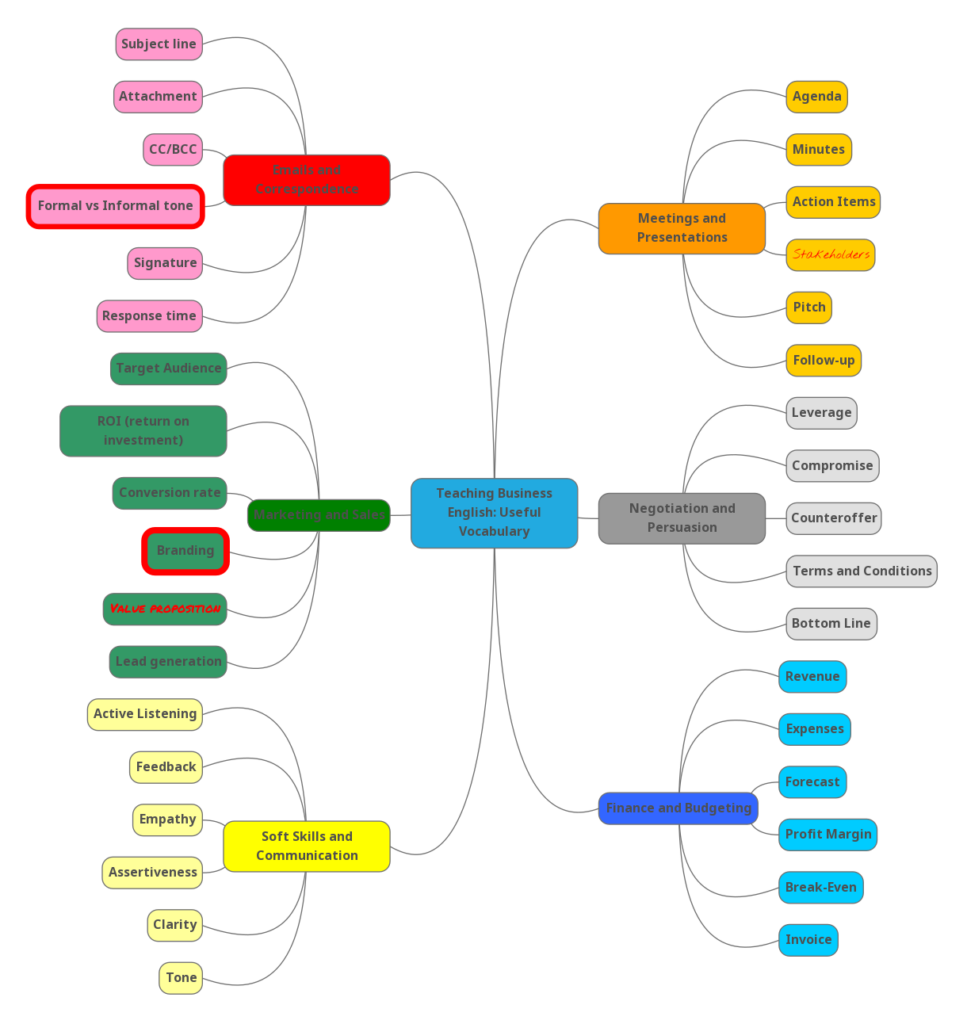
In today’s globalised world, mastering Business English is more than a nice-to-have—it’s a career booster. But memorising endless lists of jargon and phrases? Not so fun. That’s where mind maps come in. These visual tools can transform your vocabulary learning from overwhelming to organised, creative, and even enjoyable.
Why Use Mind Maps for Business English?
Mind maps are diagrams that visually organise information around a central concept. They mimic how our brains naturally process and connect ideas, making them perfect for language learning. Here’s why they work:
- Visual memory boost: Colours, branches, and images help you remember words better.
- Contextual learning: You see how words relate to each other in real business scenarios.
- Creative engagement: Drawing and designing your map makes learning more interactive.
Step-by-Step: Building a Business English Mind Map
1. Choose a Central Theme
Start with a core business topic. Examples:
- Marketing
- Finance
- Human Resources
- Meetings & Presentations
- Negotiations
Write this in the center of your page or digital canvas.
2. Branch Out with Subtopics
From your central theme, draw branches for subtopics. For example, under “Marketing,” you might include:
- Branding
- Market Research
- Advertising
- Digital Strategy
3. Add Vocabulary and Phrases
Under each subtopic, list relevant vocabulary. Include:
- Keywords (e.g., “target audience,” “ROI”)
- Useful phrases (e.g., “launch a campaign,” “analyse metrics”)
- Idioms or collocations (e.g., “cutting-edge strategy,” “brand loyalty”)
4. Use Visuals and Colours
- Use different colours for each branch.
- Add icons or doodles to represent concepts.
- Highlight important or tricky words.
5. Review and Expand
- Revisit your map regularly.
- Add new words as you encounter them in meetings, emails, or articles.
- Try creating thematic maps for specific situations like job interviews or business travel.

Tools to Create Mind Maps
You can go old-school with pen and paper or try digital tools like:
- MindMeister Maak je mind mappen online – op elk toestel | MindMeister
- XMind Xmind – Mind Mapping App
- Miro Miro | The Innovation Workspace
- Coggle Simple Collaborative Mind Maps & Flow Charts – Coggle
These platforms often allow you to collaborate, which is great for team-based learning.
Bonus Tips for Success
- Use real-life materials: Read business articles or watch TED Talks and extract vocabulary for your maps.
- Practice in context: Write sentences or role-play using the new terms.
- Teach someone else: Explaining your map to a peer reinforces your understanding.
Final Thoughts
Mind maps are more than just pretty diagrams—they’re powerful learning tools. By organising your Business English vocabulary visually, you’ll not only remember more but also use it more confidently in real-world situations.
So grab a pen or open your favorite app, and start mapping your way to better Business English today!
Thanks for reading.
Keep learning, keep growing—your communication is your edge.
And may your emails be clear, your meetings short, and your confidence high.
– Stuart @ Naturally English


